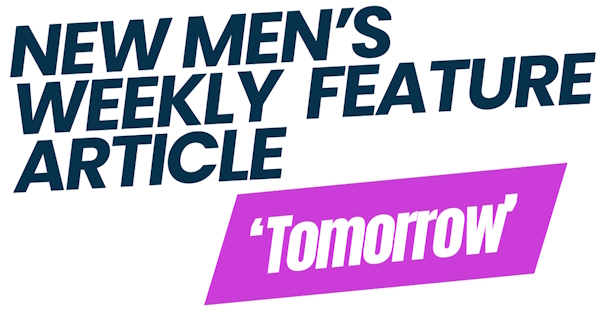Setting Up Editorial Workflows Without a Visual Backend

Image by freepik
Unlike a standard CMS, when organizations transfer to a headless CMS to facilitate their digital experience, their editorial teams are not always met with a welcome change from editor to no editor (as there is no visual backend). While this may be the case to forgo standard publishing endeavors because a WYSIWYG (what-you-see-is-what-you-get) is not available, empowered content teams can achieve and maintain or surpass productivity levels if the appropriate editorial workflows are created to support and champion the use and management of structured content and the processes. This article will discuss the design, development, and training of editorial workflows within a headless CMS without a visual backend.
What Is an Editorial Workflow and Why Do I Need It If I'm No Longer Working in a CMS That Looks Like My End Product?
An editorial workflow is the process by which content is created and moved to publication. Where a typical CMS has a more visual, page-centric look for creation and even allows editors to see what their content might look like when published, a headless CMS does not. It separates content from its design. Editors see fields and forms that may or may not translate textually into what they're envisioning. In fact, with the absence of visual components upon which many editors rely, workflows should be even more detailed defining roles, tasks, automation, and communication channels to ensure accuracy, consistency, and on-time delivery. One of the key benefits of using headless CMS for content managem is the ability to streamline these workflows at scale, enabling editorial teams to collaborate efficiently even when working with abstract, structured content. Editorial workflows are the functional foundation that allows content teams to work at scale even when what they see in the CMS is not what they'll ultimately see when the project is complete.
Where Do I Build My Workflows Based on Structure Instead of Pages?
Headless CMSs favor structured content modular pieces that form large narratives such as headlines, summaries, body copy, images, and metadata. Therefore, editorial workflows need to be created to support this modularity. Instead of reviewing a page for publication, for example, someone might approve a product description, respond to an FAQ, or edit a testimonial. This means review and approval need to happen at the content type level version controls, feedback, and suggestions should be given and implemented at the content type entry level. When you create your editorial workflow based on structure instead of what's projected to look like in layout down the line, you prepare yourself for ease of publication at the content level no matter where or how it's published down the line.
How Do I Assign Roles and Responsibilities Without Everything Being Unified?
When there is no back-end placement where tasks can visually align, it's crucial to properly assign editorial workflow responsibilities. It doesn't matter if you have content creators, editors, reviewers, translators, or publishers; everyone must know their responsibilities in the workflow. The advantage of a headless CMS, even with all this detachment, is role-based access so people can only work on what they're supposed to work on regarding content types or fields. Clear delegation minimizes confusion, prevents mistakes, and ensures every editorial task is done in the proper order. Therefore, even if someone on the team never sees what someone else created (because the front end has nothing to do with the back end), they can rest assured that as long as they've completed their task appropriately, it'll be in good hands going forward once it moves onto the next stage.
Statuses and Approval Gates Fuel Workflows
Statuses like "Draft," "In Review," "Approved," and "Published" are critical to a headless editorial workflow. They not only help signal where something is in process but also make people aware, across necessary teams, where something stands without a visual front end. Without a front end, approval gates become the enforcement mechanism for quality control driven by status changes. For instance, when pieces are done being loaded, no editors can continue to have access to edit when something is "Approved;" instead, the workflow can either notify the next editor, assign the task, or disable the ability to edit. Status-driven logic pushes pieces along without agents getting bottlenecked and ensures that only fully vetted pieces go out to external hosts.
Automated Reminders and Routing Replace Visual Oversight
Where visibility would create reminders, a level of automated routing can substitute. Automated reminders can ensure that while tasks may not be visible in the same way as a CMS with defaulted fields, people will still get nudged. Many headless CMS tools in the marketplace have integrations with workflow engines or inherent logic that allows content to be routed based on metadata, status, or given activity. Editors may receive automatic reminders to get started on something they've been tagged in. Similarly, if one piece is reliant on another, it may get kicked to legal upon registration classification to clear the rights. Similarly, assets can be deployed across instances by reverting approvals when cleared. This replaces visibility with structured repeatable processes that scale with output and headcount.
Project Management Integration Acts As Calendars & Dashboards
When editorial teams cannot rely on a dashboard or scheduled calendar view that some headless CMS options offer, they must rely on external resources that integrate with the CMS. Integration with tools like Trello, Jira, Asana, and Monday.com via API or webhook automations to the headless CMS allows for external maintenance of editorial queues to maintain assigned editorial content tasks and deadlines. These tools create missing visibility into who is doing what, which pieces are in process and when they are due back, and campaign dependencies required of other teams or platforms.
Creating a Comprehensive Editorial Process and Documentation
Because there isn't an accessible render to assess whether or not one is successful editorially, part of succeeding with a headless solution is transparency and structuring relative to content and process. Editorial processes must be comprehensive enough for content creators to understand how to fill in the required fields, adhere to tone of voice, and have fields limited based on length or organizational requests. Documentation must denote why certain content and fields exist, where the common pitfalls are, and a bullet point explanation of every step in the process. As long as the structured fields and requirements are established, editors will feel confident operating within the confines of the headless solution without ever seeing what the content would be rendered as.
Access to Fields and Render Like Feedback for Editors
Editors need something to go on once they finish even if there is no visual render. Fields and render-like access can help. Understanding what is next after structured content is created lends to the approach headless solutions seek to achieve without making things more complicated. Render simulations can provide render feedback that permits editors to ensure their task is complete. When connected via APIs, these renders can provide instantaneous results across mobile sites, websites, or applications. By encouraging editors to work towards these potentially renderable outcomes, they can feel confident in their task completion even without knowing what it will ultimately look like.
Continuity Over Iteration with a Stable Workflow Approach
If not much will change from iteration to iteration after the editor has completed their task for continuity's sake, then subsequent iterations become a challenge especially if there's a lot of collaboration between editors. Workflow steps must include where revisions are due, how people can see what's already completed and what's already been written, and how internal communication occurs. Many headless CMS solutions allow for revision logs or comment threads on specific fields, allowing people even without a viewable render to still collaborate. Editors must train themselves to think in modular fashions editing with purpose and clarity for every single block of content only to acknowledge that the same block of content could be rendered somewhere else entirely in a different render, screen, or campaign. With effective workflow practices oriented around being progressive through revision, people have less to worry about down the line.
Creating Workflows Based on a Multichannel Approach
The beauty of a headless CMS is multichannel publishing and while that's a great opportunity, it's complicated when it comes time to create editorial workflows to support it. Content sent to websites versus mobile apps versus emails versus kiosks is different therefore, sections of editorial workflows need to include field validations, platform-specific previews, and status checkpoints for conforming to published requirements of each platform. Editors, in turn, need to be trained to write with channel neutrality in mind, ensuring clarity, conciseness, and proper metadata. Similarly, workflow checkpoints must ensure that content pieces are correct and ready for whatever endpoint they're meant to be.
Onboarding New Editors in a Visual-less World
Being aware of a non-visual backend can complicate the onboarding of new team members. Onboarding has to be detailed and tailored to the challenges of a headless CMS without any WYSIWYG capabilities for contribution. It's important to train editors from Day 1 about structured content, field-dependent logic, and how best to focus on development-centric workflow checkpoints. Onboarding should stress schema awareness, modular independence, and clarity of process. Ultimately, an effectively onboarded new editor means increased comfort with decreased error output during contribution, maintaining functionality despite the lack of layout visibility.
Publishing with Marketing Campaigns in a Headless Environment
Time is of the essence when working on a marketing campaign or product launch especially when publishing content tied to deadlines and cross-team dependencies. Yet working within a decoupled CMS can complicate discussions centered around one campaign especially when content spans multiple content types, delivery methods, and teams. Editorial workflows should only enhance in this scenario, as titles, hero image placements, feature copy regions, and related metadata need to go live at the same time but through different paths. Workflows created around campaigns in the CMS, with statuses and task dependencies, will guarantee that pieces of the puzzle are vetted, approved, and published and not overlooked or lacking approval while working in a dynamic simultaneous approach.
Content Governance and Compliance are Part of Each Stage
Compliance rules brand voice, legal reviews, accessibility, etc. don't disappear when utilizing a headless system. If anything, they become more reliant upon the creation of workflows since a visual backend no longer exists to maintain compliance via other means. Certain approval stages must have compliance checkpoints in which compliance officers/legal teams actively view and review content fields that pertain to their issues. A properly constructed workflow if done so with intention allows these compliance layers to be situated directly on the path to publication so that content cannot go live until necessary approvals are completed.
Workflows Offer Accountability Analytics for Future Improvements
Editorial workflows require assessment after developmental approval to ensure they're still functioning properly over time. In other words, access to how long content sits in certain places, how often it's sent back for edits, who is sending content through the workflow too often, etc., helps determine future training opportunities/agendas and redistribution of resources. Headless systems offer the analytics needed to assess and readjust not only based on cumulative past data but also current findings. Being able to monitor performance helps create quality enhancements and allows content leaders to judge both the efficacy and appeal of their constructed workflows for future recapitulation.
Conclusion: Visuals Don't Necessarily Mean Editorial Agility
Just because there is not a visual backend does not mean that editorial workflows are less necessary (or effective). If anything, it's even more vital to have established structure, clear ownership, collaborative efforts via automation, and editorial support via documentation creation and ancillary element creation to retain control over rapid delivery without sacrificing quality. Headless doesn't mean unaware it's modular and specific to scale through content hierarchy. As long as the digital experience aligns with operational processes, headless content teams can thrive and stay one step ahead for consistency across all channels and for all viewers.









